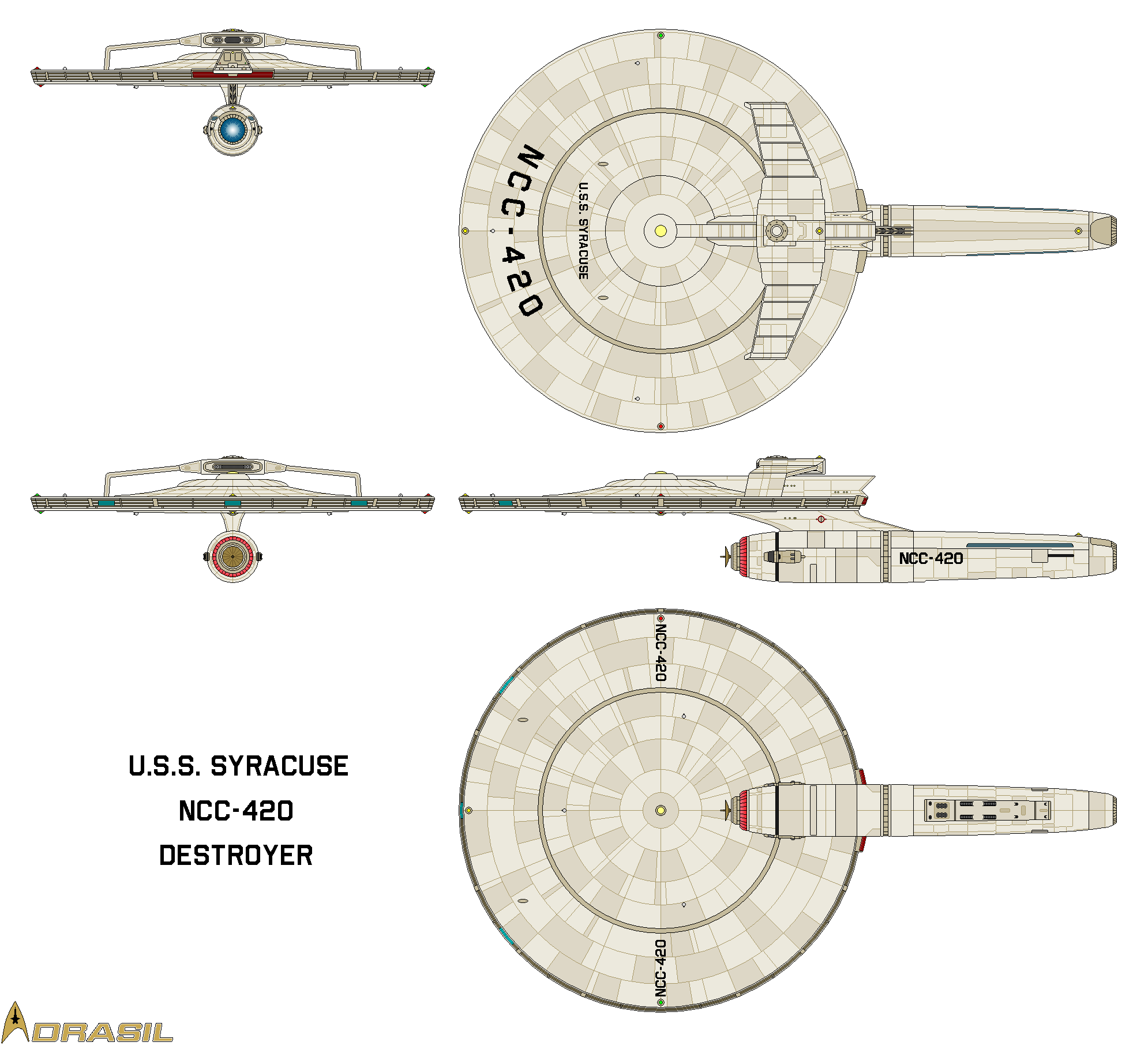HOME | DD
 RevancheRM — Syracuse class destroyer (2223)
RevancheRM — Syracuse class destroyer (2223)

#starfleet #startrekstarship #timosaloniemi
Published: 2019-08-29 21:13:14 +0000 UTC; Views: 2585; Favourites: 38; Downloads: 33
Redirect to original
Description
The Syracuse class destroyer and its subclasses ( Saladin, Boston, Einstein, Siva, Siva Flight II, Pompey, Pompey (w/Q-Pod), Pompey (w/Torpedo Pod), Pompey (w/Sensor Pod), Einstein Flight II, Siva Flight III, Siva Flight III (upgrade)) are Part 3 of the Project Starship series.
Image provided by: adrasil
Original inspirations from: Star Trek II: The Wrath of Khan, Franz Joseph, Star Trek (2009), Star Trek: Axanar
Incorporating parts built by: captshade & nichodo
History from: Hobbyist's Guide to the UFP Starfleet , by Timo Saloniemi
Variant blueprints: Access via Adrasil's Download button
Featured in: Starship Recognition Manual #292
In serious competition for the more complex heavy destroyer Detroyat design, Geering lost out to Aurora. However, this was far from a critical setback, as the company had been recently awarded the Burke frigate contract and received the lower-tier Syracuse destroyer one immediately following the Detroyat announcement. Since there were at least four times as many hulls associated with this particular victory, the other loss to Aurora was not a large cause of disappointment.
The Syracuse was relatively simple to take on, as it used the Burke-type saucer with relatively few modifications to it. It borrowed the hangerette/spinal attachment that was well underway for the forthcoming Aldrin subclass deep space frigate, and incorporated Geering's developing concept of a weapons pod, though with a permanent presence and an established torpedo tube arrangement. The nacelle pylon design was also similar, though only one nacelle was incorporated into this design.
The PB-29 warp nacelle had proven--in the initial warp tests--the capability of getting this anti-capital ship platform up to warp 5.1, with a cruise speed of warp 4. The nacelle itself massed 148,000 metric tons and came in at a length of 148 meters. Similar to the PB-21 series, it also had a Hycor deflector system built ahead of the stunted Bussard collector, providing an FTL graviton stream out forty-seven light-seconds ahead of the vessel, for obstructions up to 5 tons and up to two light-minutes for considerably smaller objects. It also carried most of the warp power generation equipment, though the nacelle pylon shared some of this responsibility.
The weapons pod was a concept developed for the Burke class nearspace frigates which Geering promoted as an installable option when heavy firepower was needed for an emergent threat. The off-hull pod idea was explored with the Syracuse, though it was not removable on this vessel, since the torpedoes served as the primary weapons system. Unfortunately, the tight space and still-developing technology meant that the pod was restricted to two forward and two rearward light torpedo tubes (though a total complement of 60 photonic torpedoes were loaded in the magazine).
Early combat engagements demonstrated the class was just not a worthy combatant alongside the Detroyats, not only because the warheads were under-inspiring, but largely due to the lack of maneuverability associated with a single nacelle warp field. Range also proved to be a considerable barrier to strategic deployment of the Syracuse assets and all three shortcomings forced Star Fleet planners to re-examine the needs of the fleet. While production of the first two runs remained authorized, Star Fleet ordered an improved model be identified and produced.
The Syracuse destroyers' first production run honored ancient cities that had successfully resisted assaults & sieges, while the second run were named after classic Terran gods and demigods. They massed 310,000 metric tons, and their length, beam, and height were 209.4, 122, and 33.2 meters respectively.Forty officers and 162 enlisted served as the class complement. Along with the four light torpedo launchers, the ships each had four Type J phase cannons and six 1.25 MW defensive laser emitters, as well as a 1-layer conformal forcefield, and 3 secondary hull-mounted navigational deflectors. Two light shuttles and two workpods were embarked aboard.
Note: I pointedly broke from Timo's categorization of this series as the Saladin class, because though the Saladin class is far more familiar with fans than the other named variants, it is a variant of the "mother" class, the Syracuse. This is not to downplay the relative importance of the Saladin or Siva classes, but to remain consistent with naming structure of these series.
Would you like to learn more about this class of ship? Download the free Hobbyist's Guide to the UFP Starfleet , a three-volume, 1236-page history of space flight, by Timo Saloniemi.
For an extremely rich gallery of Star Trek starships and vessels from other universes, check out my partner, Adrasil , here on DeviantArts.


























